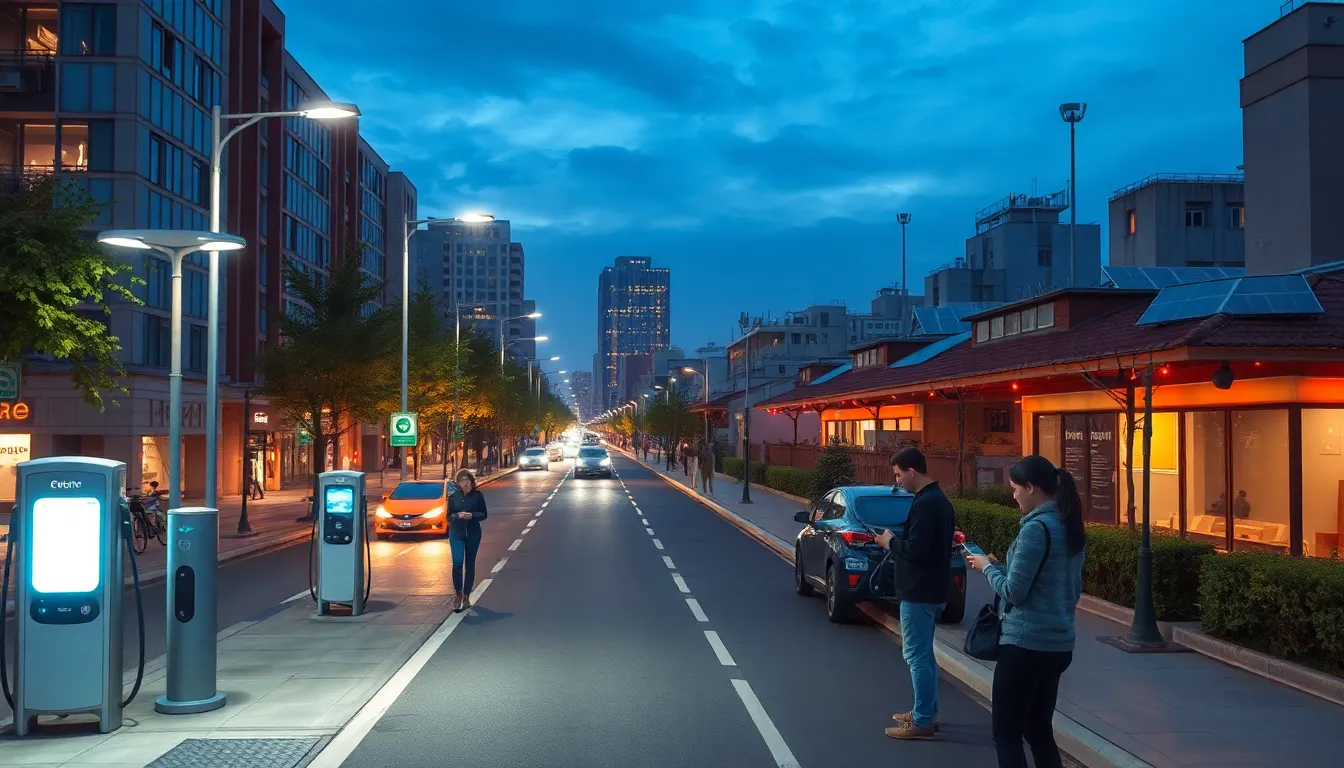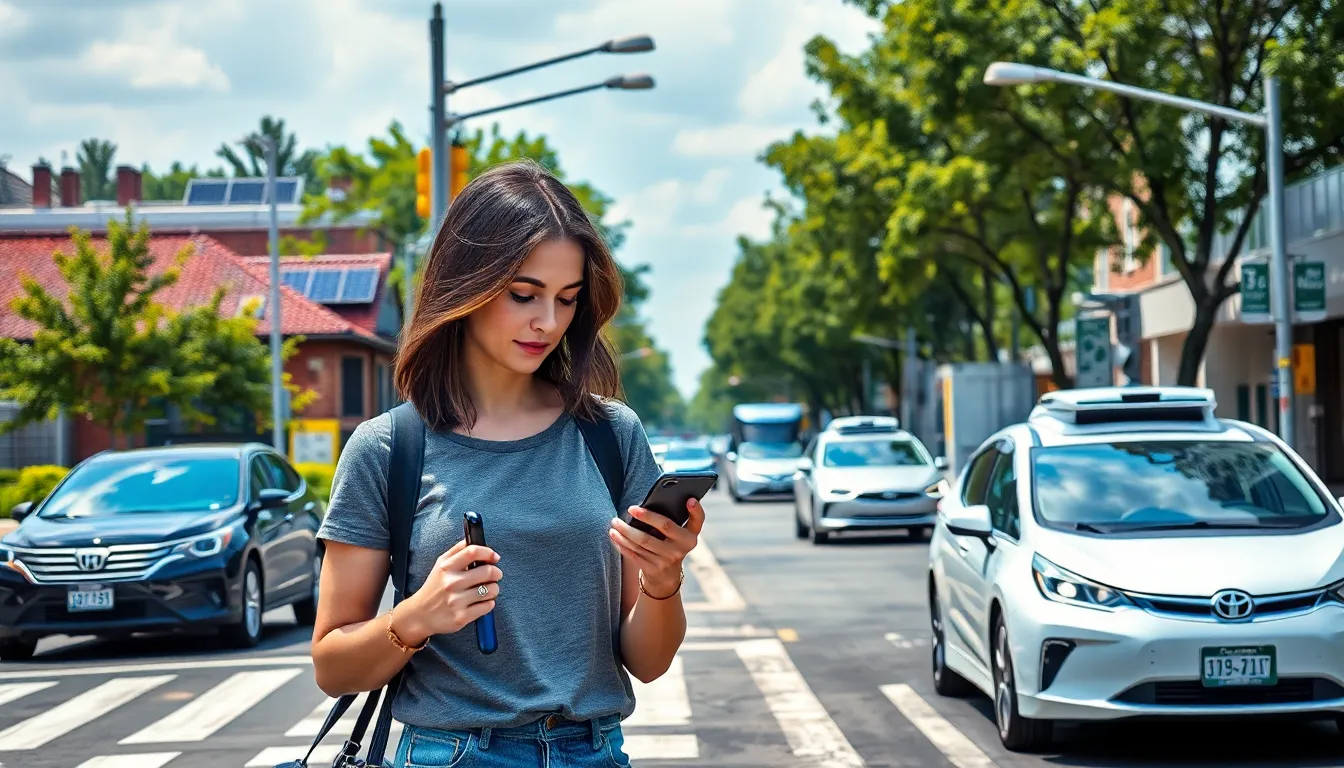Imagine a world where traffic lights know your favorite playlist and streetlights dim when no one’s around—welcome to the future of smart city technology! These urban innovations are transforming bustling metropolises into efficient, eco-friendly havens. Gone are the days of getting stuck in gridlock or searching for a parking spot like it’s a hidden treasure; smart cities are here to make life easier and, dare we say, a bit more fun.
Table of Contents
ToggleOverview of Smart City Technology
Smart city technology encompasses various advanced solutions aimed at improving urban living. These technologies leverage internet connectivity and data analytics to enhance infrastructure efficiency. Sensors play a crucial role; they gather real-time data on traffic patterns, air quality, and energy usage.
Connected devices form a network that facilitates communication between city components and residents. Smart streetlights adjust their brightness based on pedestrian movement, contributing to energy savings. Traffic management systems utilize real-time data to optimize flow and reduce congestion.
Public safety is another key area benefiting from smart city technology. Surveillance cameras equipped with artificial intelligence can detect unusual activity, alerting authorities more quickly. Emergency response systems coordinate better through integrated communication channels, enhancing rescue operations.
Waste management improves with smart bins that monitor fill levels, notifying services for timely pickups. Public transportation systems benefit from real-time tracking apps, allowing users to plan their journeys more efficiently.
Sustainability efforts also gain momentum; smart grids manage energy distribution effectively. Renewable energy sources like solar panels integrate seamlessly into city infrastructures, reducing reliance on fossil fuels.
Engaging citizens in urban planning makes smart city technology more inclusive. Mobile applications enable feedback and suggestions, empowering residents in decision-making processes. As these technologies evolve, they promise to create healthier, more efficient cities.
Key Components of Smart City Technology

Smart city technology relies on vital components that enhance urban living. Each element plays a crucial role in achieving efficiency and sustainability.
Internet of Things (IoT) Integration
IoT integration transforms urban environments through connected devices. Sensors collect data on traffic, environmental conditions, and energy consumption. Smart streetlights, for instance, adjust brightness based on pedestrian presence. Public transportation systems utilize real-time tracking for improved efficiency. Residents benefit from this technology via mobile applications that provide updates on city services. Connectivity between devices ensures seamless communication across infrastructure.
Data Analytics and Management
Data analytics forms the backbone of smart city initiatives. Cities analyze the vast amounts of data collected from various sources. Trends in traffic flow and energy usage emerge through sophisticated models. This analysis drives informed decision-making, helping city planners optimize resources and services. Cities leverage data management systems to ensure efficient operations and data security. Residents enjoy enhanced services and a better quality of life as a result of data insights.
Sustainable Energy Solutions
Sustainable energy solutions play a pivotal role in smart cities. Renewable energy sources such as solar and wind power reduce reliance on fossil fuels. Smart grids manage energy distribution, optimizing consumption across neighborhoods. Electric vehicle charging stations integrate with city infrastructure to encourage green transportation. Energy-efficient buildings utilize smart technology to monitor and reduce consumption. As a result, sustainability becomes an integral aspect of urban living.
Benefits of Smart City Technology
Smart city technology offers numerous advantages that enhance urban life. These innovations significantly improve various aspects of city living, ensuring a more efficient and sustainable environment.
Improved Urban Mobility
Enhanced urban mobility emerges through smart city solutions. Traffic congestion decreases as real-time data guides optimal routing for vehicles and public transport. Intelligent traffic lights, equipped with sensors, adapt to traffic flow, reducing wait times at intersections. Public transportation benefits, too, as GPS tracking allows users to access live updates on bus and train arrivals. This capability encourages more residents to use public transportation, which leads to fewer vehicles on the road, ultimately alleviating congestion even further.
Enhanced Public Safety
Public safety improves with the implementation of smart technologies. AI-driven surveillance cameras monitor urban areas, identifying suspicious activities and potential threats. In addition, these systems help law enforcement respond quickly to incidents. Emergency services gain advantages from smart technologies, as integrated data analytics allow for better resource allocation. Real-time alerts notify residents of emergencies, ensuring timely responses. Comprehensive street lighting adjustments based on pedestrian activity further enhance safety, making urban environments more secure for all.
Environmental Sustainability
Environmental sustainability thrives in smart cities through innovative technologies. Efficient energy management relies on smart grids that adapt to fluctuations in energy demand. Cities integrate renewable energy sources, such as solar and wind, promoting cleaner alternatives. Waste management practices improve as smart bins collect data on fill levels, optimizing collection routes and reducing emissions. Real-time monitoring of air quality helps cities take proactive measures to address pollution. Sustainable practices align with urban development, turning cities into eco-friendly spaces that prioritize both residents’ health and the environment.
Challenges and Considerations
Smart city technology faces several key challenges that require careful consideration. Addressing these challenges ensures the successful implementation of intelligent urban solutions.
Privacy and Security Issues
Concerns regarding privacy and security often arise as cities adopt smart technologies. Citizens worry about the extensive data collection from sensors and devices that monitor everyday activities. Cybersecurity threats pose significant risks, necessitating robust measures to protect sensitive information. Cities need transparent data management policies to build trust among residents. Compliance with regulations like GDPR safeguards citizens’ rights and enhances accountability for data handling.
Funding and Investment Barriers
Securing funding for smart city projects presents additional hurdles. Municipalities often face budget constraints that limit investment in innovative technologies. Engaging public-private partnerships can provide necessary capital and expertise. Developing a clear business case helps demonstrate the return on investment, attracting potential investors. Governments must prioritize strategic allocations to foster advancements in smart urban solutions. Establishing financing models that support initial project launches can ease the financial burden on cities.
Future Trends in Smart City Technology
Advancements in smart city technology are accelerating rapidly. Urban areas are increasingly adopting artificial intelligence to enhance city operations. Citizens benefit from projects aimed at developing integrated mobility solutions through real-time data analytics.
Further integration of the Internet of Things (IoT) enhances connectivity among city infrastructure. Traffic lights equipped with AI are optimizing vehicle flow, reducing congestion significantly. Citizens are already experiencing improved public transport options, with apps providing real-time updates on arrival times.
Investments in renewable energy technologies create sustainable urban environments. Solar panels and wind turbines are becoming common in city planning. Smart grids enable efficient energy usage, minimizing waste and reducing reliance on traditional energy sources.
Enhanced environmental monitoring is another focus area. Sensors placed throughout cities gather air quality data, allowing for informed decisions regarding public health. Sensors also track energy consumption, promoting efficiency in city operations.
Engaging citizens in the urban planning process is gaining traction. Mobile applications empower residents to provide feedback on initiatives, creating a sense of community ownership in smart city projects. This trend encourages inclusive development, as city planners consider diverse perspectives and needs.
Moreover, security remains a top priority. Cities are implementing advanced surveillance systems powered by AI to enhance public safety. Investments in cybersecurity are critical, ensuring that sensitive data remains protected while fostering trust among residents.
Smart city technology trends point towards increased sustainability, connectivity, and citizen engagement. Prioritizing these areas ensures that future urban living becomes more efficient, safe, and environmentally friendly.
Smart city technology stands at the forefront of urban transformation. By harnessing the power of data and connectivity, cities can enhance the quality of life for residents while promoting sustainability. The integration of innovative solutions not only streamlines urban infrastructure but also fosters community engagement, paving the way for a more inclusive approach to city planning.
As advancements continue to unfold, the focus on security and privacy remains crucial. Balancing technological progress with responsible data management will be key to building trust among citizens. The journey toward smarter cities is just beginning, and the potential for improved urban living is immense. Embracing these technologies will ultimately lead to healthier, safer, and more efficient environments for all.




